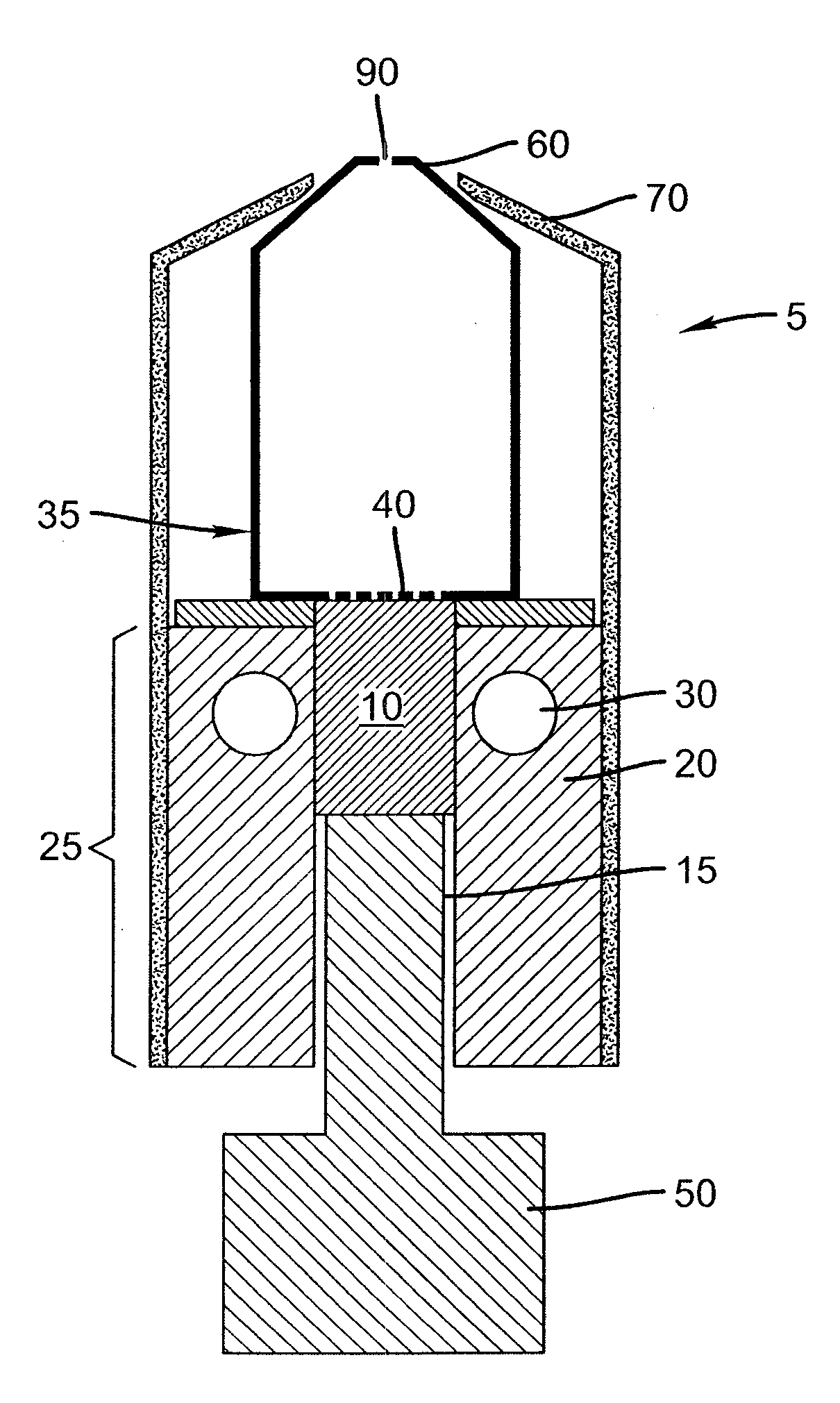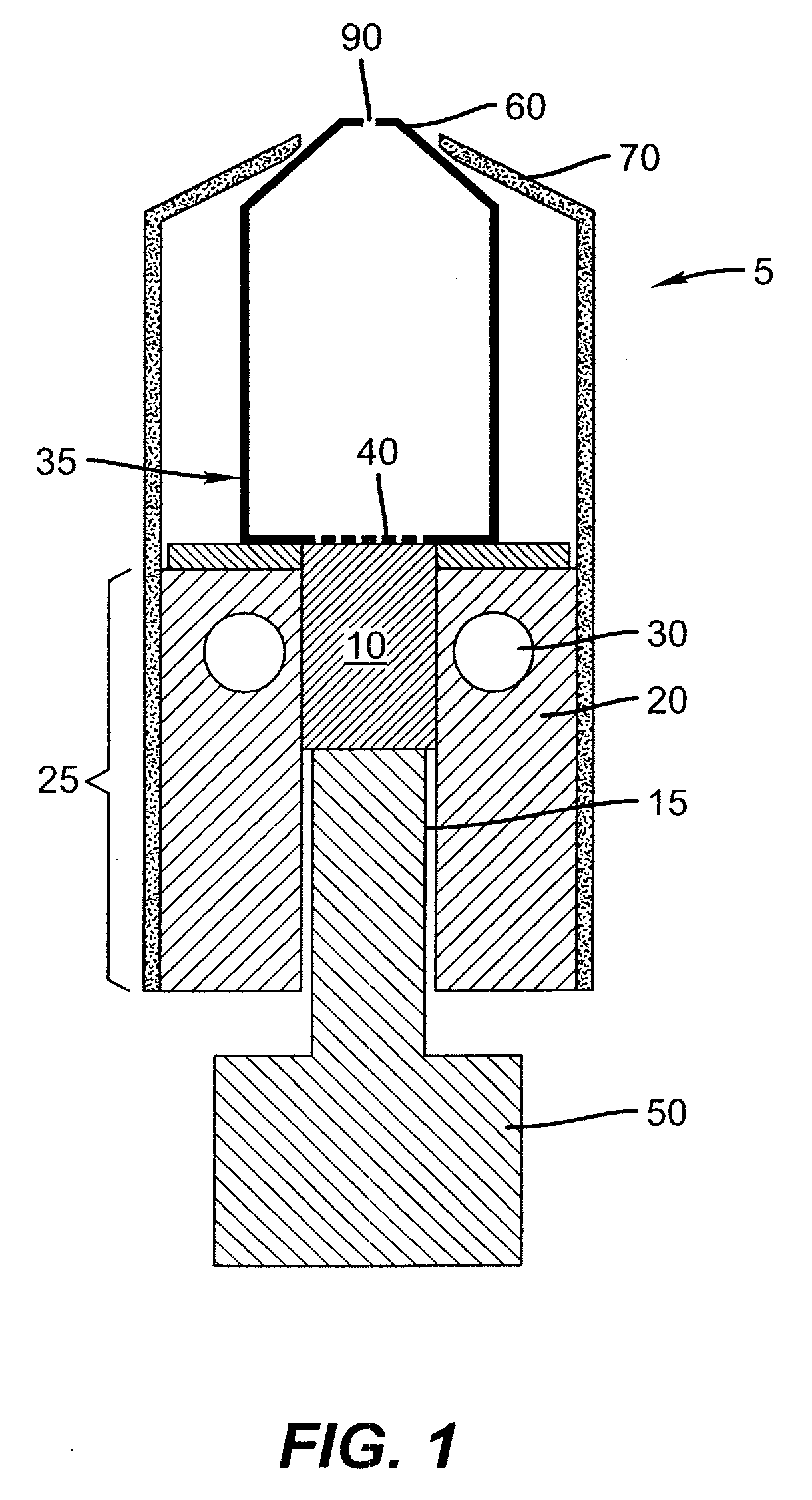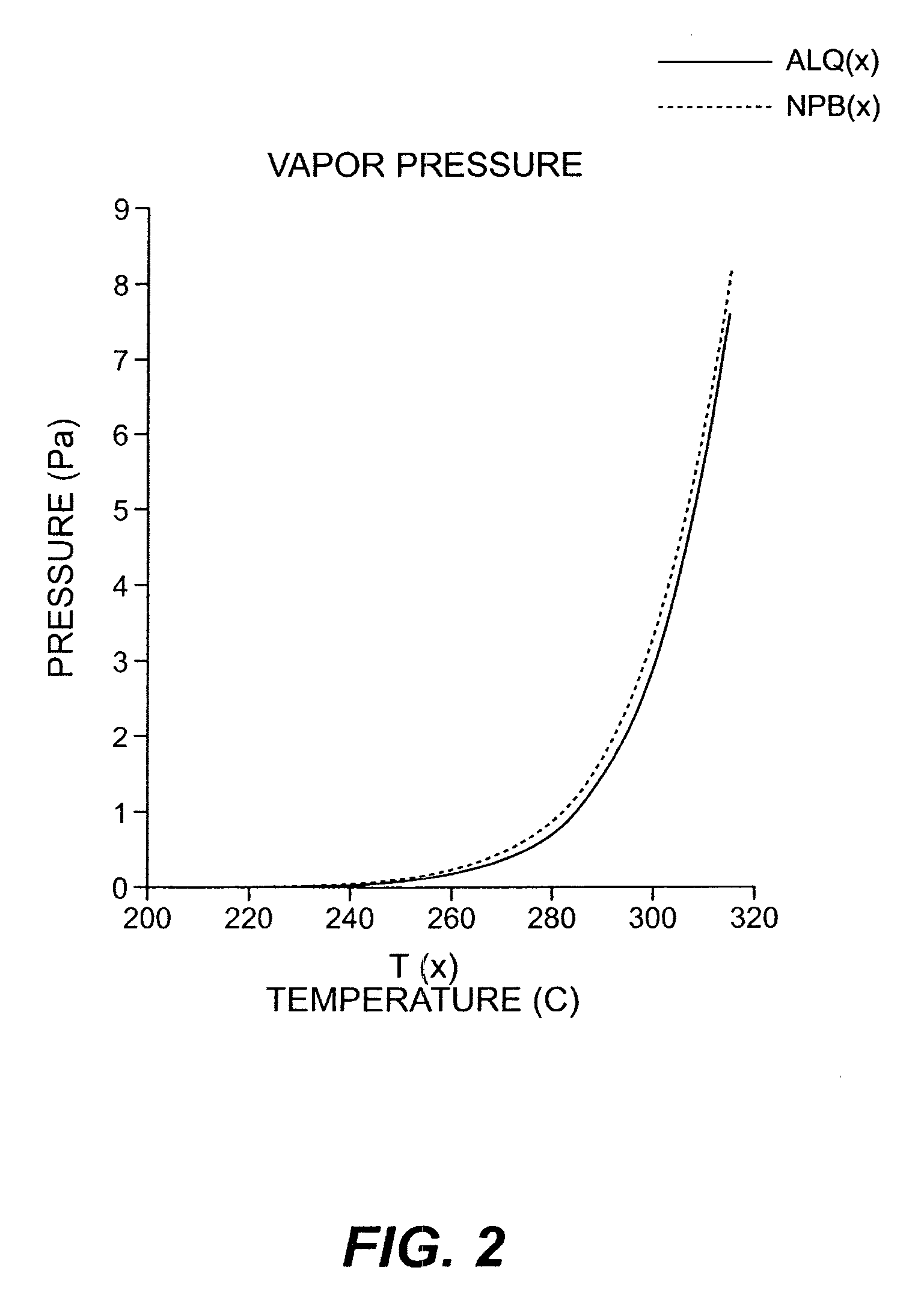Deposition apparatus for temperature sensitive materials
a technology of deposition apparatus and temperature sensitive materials, which is applied in the direction of vacuum evaporation coating, chemical vapor deposition coating, coating, etc., can solve the problems of significant degradation, changes in the structure of molecules and associated changes in material properties, and the use of organic materials in the manufacture of oled devices are often subject to degradation, so as to reduce costs and improve the control of deposition rate
- Summary
- Abstract
- Description
- Claims
- Application Information
AI Technical Summary
Benefits of technology
Problems solved by technology
Method used
Image
Examples
Embodiment Construction
[0035]A system for the deposition of vaporized materials on a substrate includes two or more orientation-independent material vaporization and deposition apparatuses for directing vaporized organic materials onto a substrate surface to form two or more thin-films. Each of the orientation-independent apparatuses are arranged in a different relative orientation and comprise: a chamber containing a quantity of material; a permeable member at one end of the chamber with a heating element for vaporizing the material; and means for continuously feeding the material toward the permeable member as it is vaporized, whereby organic material vaporizes at a desired rate-dependent vaporization temperature at the one end of the chamber. A variety of means for continuously feeding the material may be employed, for example, a piston, an auger, an impeller, a nozzle either working independently or in combination with one another, or any other powder metering device.
[0036]Turning now to FIG. 1, there...
PUM
| Property | Measurement | Unit |
|---|---|---|
| Flexibility | aaaaa | aaaaa |
| Sensitivity | aaaaa | aaaaa |
| Boiling point | aaaaa | aaaaa |
Abstract
Description
Claims
Application Information
 Login to View More
Login to View More - R&D
- Intellectual Property
- Life Sciences
- Materials
- Tech Scout
- Unparalleled Data Quality
- Higher Quality Content
- 60% Fewer Hallucinations
Browse by: Latest US Patents, China's latest patents, Technical Efficacy Thesaurus, Application Domain, Technology Topic, Popular Technical Reports.
© 2025 PatSnap. All rights reserved.Legal|Privacy policy|Modern Slavery Act Transparency Statement|Sitemap|About US| Contact US: help@patsnap.com



